What Is Prompt Engineering? A Complete Guide to Mastering AI Prompts
Discover what is prompt engineering and learn expert tips to craft prompts that maximize AI performance. Unlock AI's full potential today!
At its heart, prompt engineering is simply the craft of writing clear instructions for an AI to get the exact result you want. Think of it like talking to an incredibly smart and capable assistant who takes everything you say literally. If you're vague, you'll get a vague or unhelpful response. But if you're precise, you can unlock some truly amazing results.
This is the skill that separates those who treat generative AI as a neat toy from those who use it as a powerful professional tool. To make this skill actionable, you need a workflow, and that's where a platform like Zemith becomes indispensable, helping you organize, refine, and reuse your best instructions.
What Is Prompt Engineering, Really?

When you get down to it, prompt engineering is all about bridging the communication gap between what you're thinking and what the AI understands. Models like ChatGPT or Gemini don't actually know what you want; they just make highly educated guesses based on your words and the mountains of data they were trained on.
This is why how you ask is everything. A lazy, one-line request will almost always get you a generic, cookie-cutter answer. A carefully crafted prompt, on the other hand, is like giving the AI a detailed creative brief. It guides the model's entire "thought process," steering it toward the right tone, format, and level of detail.
This strategic approach to communication is the secret to getting predictable, high-quality results instead of just spinning your wheels with frustrating trial-and-error. Using a tool like Zemith helps you build these strategic prompts systematically, turning a good idea into a repeatable, high-value workflow.
The Anatomy Of An Effective Prompt
Good news: you don't need a computer science degree to get good at this. Prompt engineering is much more about clear communication, a dash of creativity, and logical thinking. The best prompts are just a combination of a few key ingredients that work together to leave no room for misunderstanding.
While there's no single magic formula, great prompts are built from a few core elements. Understanding these building blocks is the first step toward getting consistently better outputs from any AI model.
Here’s a quick breakdown of what goes into a solid prompt:
The Anatomy Of An Effective Prompt
| Component | Purpose | Simple Example |
|---|---|---|
| Role or Persona | Tells the AI who it should be, framing its tone and expertise. | "Act as a seasoned travel blogger..." |
| Context | Gives the AI the background information it needs to understand your goal. | "...writing a post about a 3-day trip to Kyoto." |
| Task or Instruction | The specific action you want the AI to perform. | "Create an itinerary focused on historical sites." |
| Format & Constraints | Defines the structure and any rules the AI must follow. | "Format it as a bulleted list. Keep the tone enthusiastic and under 300 words." |
Putting these pieces together gives the AI a complete picture, dramatically increasing the odds that you'll get what you're looking for on the first try.
Prompt engineering isn’t about memorizing secret "magic words." It's about learning how to communicate your ideas with enough clarity and context that the AI can bring your vision to life.
Getting a handle on these components is a huge step forward for anyone wanting to create better work in less time. And while the skill itself is a massive advantage, combining it with the right tools can be a game-changer. Platforms like Zemith are built to help you put these principles into practice, giving you a structured environment to build, test, and reuse your best prompts.
If you're looking for more ways to sharpen your communication, check out our guide to help you improve your writing ability.
The Surprising History Of Talking To Machines
Prompt engineering might feel like a brand-new skill, something that popped up overnight with the latest wave of AI tools. But the truth is, its roots go much deeper. This isn't just a fleeting trend; it’s the latest chapter in a long story about how we humans have tried to get computers to understand what we want.
Long before we had powerful AI that could write poetry or code, the pioneers of computing were wrestling with the same core problem: how do you phrase an instruction to get a machine to do something predictable? The goal hasn't changed, even if the technology is worlds apart. Those early, clunky attempts laid the foundation for the sophisticated conversations we have with AI today.
From Simple Blocks To Complex Ideas
The path from basic commands to creative collaboration was slow and steady, marked by a few key breakthroughs. Seeing how we got here helps explain why prompt engineering has become such a vital skill.
You can trace the idea all the way back to early AI research. One of the most famous examples is a program from the 1970s called SHRDLU, created by Terry Winograd. It operated in a simple "blocks world" where you could give it commands like, "pick up a big red block." It sounds basic now, but at the time it was a massive step forward. It proved a computer could actually parse human language and take action based on a carefully structured prompt.
At its core, prompt engineering has always been about translation—converting human intent into a language a machine can execute. The better the translation, the better the outcome.
This foundational work set the stage for everything that came next. As computers got more powerful and new deep learning techniques were developed, the possibilities just exploded. The simple act of telling a machine what to do became infinitely more potent, and the instructions we write today are built on the shoulders of those early experiments.
The Modern Era Of Prompting
The game changed completely with the release of models like OpenAI's GPT-3. All of a sudden, the ability to "talk" to a machine wasn't limited to computer scientists in a lab. Anyone could do it. This democratization of AI is what truly pushed prompt engineering into the mainstream.
Now, the focus has shifted from giving simple commands to crafting nuanced, creative, and sometimes complex instructions. A well-designed prompt can generate anything from compelling ad copy to a fully functional piece of software. It’s become clear that our ability to communicate ideas effectively to our AI partners will be a huge part of future innovation. Zemith helps you turn this potential into an actionable strategy by providing a workspace where your best prompts become reusable assets for your entire team.
Core Prompting Techniques You Can Start Using Now
Once you get past simple commands, you start to see what prompt engineering is really about. The pros have a whole toolkit of strategies they use to get incredible, consistent results from AI models. Learning these methods is how you go from asking basic questions to generating sophisticated, valuable work.
Think of these techniques less like rigid rules and more like different ways to have a conversation with an AI. Each one is built for a certain kind of job, and knowing which one to grab is a game-changer. For a practical way to apply these, Zemith offers templates and workflows designed around these exact techniques.
Let's break down some of the most powerful techniques you can start playing with today.
This image shows how a single, well-designed prompt can lead to all sorts of high-quality results, just by changing the technique you apply.
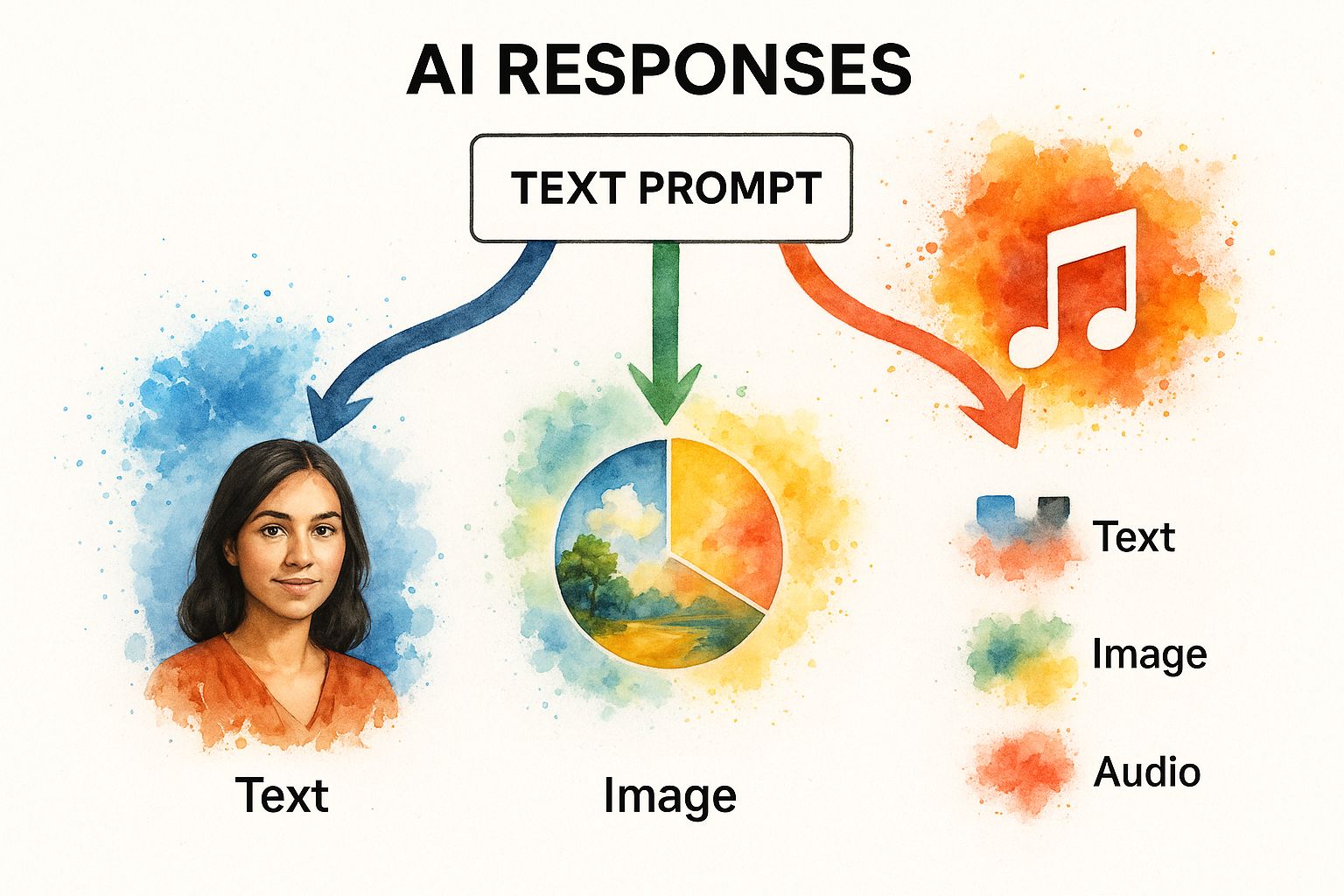
The big takeaway here? Your first instruction is just the launchpad. The real magic happens when you use specific strategies to steer the AI exactly where you want it to go.
Mastering Different Prompting Styles
The most straightforward method is Zero-Shot Prompting. It’s what most of us do without thinking—just give the AI a direct order without any examples. Something like, "Summarize this article about quantum computing." You're trusting the model's built-in knowledge to get the job done.
It works great for simple requests. But its success really hinges on the AI already knowing the context and the format you have in mind. For anything more complex or specific, you'll need to step up your game.
That’s where Few-Shot Prompting comes in. Here, you give the AI a few examples of what you're looking for before you make your actual request. It's like showing a new hire a couple of finished reports to get them up to speed on the right tone and structure.
- For instance: Before asking the AI to write a product description, you could feed it two or three of your best-performing descriptions. This mini-training session makes a huge difference in the accuracy and style of what you get back.
This approach is fantastic for any task that needs a specific creative flair or a rigid structure that the AI wouldn’t guess on its own.
Advanced Strategies for Complex Problems
When a task involves logic or multiple steps, Chain-of-Thought (CoT) Prompting is your best friend. Instead of just demanding the final answer, you tell the AI to "think step by step" or lay out its reasoning. This simple instruction forces the model to break a big problem into smaller, more logical pieces, which almost always improves the final result.
By making the AI show its work, you steer it away from giving you a shallow or just plain wrong answer. It's an absolute must for analytical work, math problems, or debugging code.
Finally, one of the most creative and effective techniques is giving the AI a Persona. When you start your prompt with "Act as an expert copywriter specializing in luxury travel," you set the entire stage for the conversation. The model immediately adopts the tone, vocabulary, and perspective of that role, producing content that feels genuinely specialized.
Choosing The Right Prompting Technique
Knowing which technique to deploy can feel tricky at first. This table breaks down the core methods to help you decide which one fits your needs.
| Technique | Best For | Complexity |
|---|---|---|
| Zero-Shot | Quick, simple tasks where the AI already has context. | Low |
| Few-Shot | Tasks requiring a specific style, tone, or format. | Medium |
| Chain-of-Thought | Complex problems that require step-by-step logic or reasoning. | Medium |
| Persona | Generating content that needs a specific voice, expertise, or perspective. | Low |
Each technique is a tool in your belt. The more comfortable you get with them, the more you can mix and match to tackle any challenge.
The real skill comes from combining these techniques. You could assign a persona and provide a few examples to generate highly specialized content, like detailed technical documentation. For a deeper dive on that topic, check out our guide on how to write technical documentation. By weaving these strategies together, you create a powerful and repeatable prompting workflow. And platforms like Zemith make it even easier, giving you the tools and templates to apply these techniques without breaking a sweat.
The Real Skills Behind Professional Prompt Engineering
So, what does it really take to be a pro at prompt engineering? It’s easy to picture a hardcore coder hunched over a keyboard, but the truth is way more interesting. The best prompt engineers are a fascinating mix of human-centric skills, where creativity and clear communication are just as vital as any technical chops.
Think of them as part analyst, part writer, and part strategist. They have this deep-seated curiosity about how an AI model "thinks" and are constantly experimenting to figure out what kind of language unlocks its true potential. This isn't about just mashing keywords together; it’s about framing problems, giving the AI rich context, and guiding it with a steady, precise hand.
More Than Just Technical Know-How
One of the biggest myths is that prompt engineering is a purely technical job. While a little AI knowledge certainly helps, the skills that really move the needle often come from the humanities. A great prompt engineer needs the sharp clarity of a technical writer, the empathy of a UX designer, and the imaginative spark of a creative director.
The whole idea of a "prompt engineer" as a job title is pretty new, really taking off after large language models exploded onto the scene post-2022. A 2025 study looking at AI job posts found that dedicated prompt engineer roles are still quite rare, making up less than 0.5% of similar job titles. The research also showed just how diverse the required skills are: 22.8% of listings ask for AI knowledge, 21.9% stress communication skills, 18.7% want prompt design expertise, and 15.8% are looking for creative problem-solvers. If you want to dive into the data, you can read the full research on the prompt engineer job market.
What this tells us is that knowing your audience—and in this case, the AI is your audience—is everything. The end goal is to turn the model into a reliable partner you can count on. An actionable way to do this is by using a platform like Zemith to build a shared library of proven prompts your whole team can use.
The Core Competencies That Matter
Okay, so what specific skills should you be working on? It really boils down to a few key areas that separate the dabblers from the professionals.
- Subject Matter Expertise: You can't ask brilliant questions about something you know nothing about. Having deep knowledge in a particular field is what allows you to craft nuanced prompts that get you expert-level answers.
- Analytical Thinking: Professionals are masters at breaking things down. They can take a big, messy goal and deconstruct it into small, logical steps that an AI can easily follow, often using techniques like Chain-of-Thought to guide the model's reasoning.
- An Iterative Mindset: Your first prompt is almost never your best one. The real skill is in the follow-through. Great engineers are persistent, constantly tweaking, testing, and refining their instructions to push the results from good to great.
Ultimately, a great prompt engineer doesn’t just get answers from an AI; they build a system of communication that produces consistently excellent results. They know how to ask, when to clarify, and how to iterate toward perfection.
This is exactly where platforms like Zemith come in. They're designed to support this blend of skills. By giving you tools to organize, test, and reuse your best prompts, Zemith helps you turn your creative ideas and analytical insights into powerful AI workflows you can rely on again and again.
Why Businesses Are Pouring Money Into Prompt Engineering
Not long ago, prompt engineering was a niche skill for a handful of tech enthusiasts. Today, it’s a core business function, and for a very simple reason: companies have realized that the quality of their AI output is a direct reflection of the quality of their instructions. Throw a vague prompt at a model, and you’ll get a generic, often useless, result. It’s a waste of time and computing power.
This is exactly why expert prompt engineering is becoming a serious competitive advantage. It's the key to turning a powerful, general-purpose AI into a specialized tool that solves specific, real-world problems. By mastering how to give precise instructions, companies are speeding up product innovation, untangling complex operations, and building smarter, more helpful customer experiences.
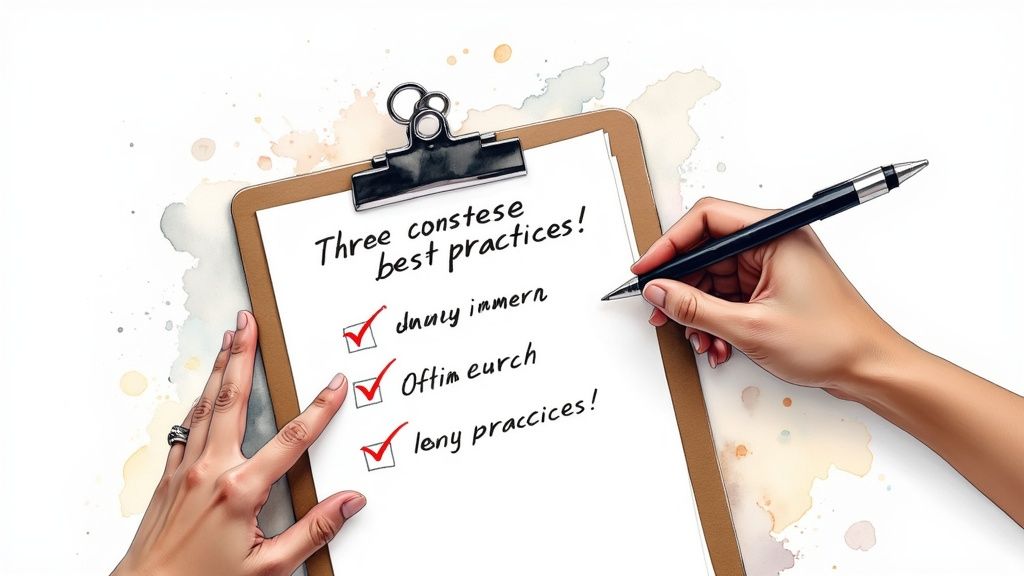
It’s All About Tangible Business Value
The impact here isn’t theoretical—it’s hitting the bottom line. In finance, a carefully constructed prompt can produce a far more accurate market forecast. For a logistics company, it can find the most efficient supply chain routes. In both cases, the result is a direct boost to profits.
You can see just how strategic this skill has become by looking at the job market. Data from 2023–2024 revealed that some prompt engineering roles are commanding salaries as high as $335,000 per year, putting it right up there with the top-paying jobs in tech.
Think of it this way: prompt engineering isn't just about "talking to an AI." It's about unlocking its full economic potential. The businesses that get this right are the ones building smarter workflows, getting to market faster, and making better decisions backed by data.
Turning an Expense Into a Profit Driver
Ultimately, investing in this skill is how a business turns its AI initiative from an expensive experiment into a reliable profit center. That’s why so many organizations are building out their prompt engineering capabilities for everything from advanced AI content writing to sophisticated data analysis.
So, how does this deliver a clear return on investment?
- Boosts Operational Efficiency: You can automate tedious tasks like generating reports or pulling specific data from documents. This frees up your team from manual work so they can focus on bigger things.
- Speeds Up Innovation: Your teams can go from idea to prototype in a fraction of the time, whether they're testing a new marketing campaign or mocking up a new software feature.
- Improves Decision-Making: A well-prompted AI can sift through massive datasets and spot subtle patterns or insights that a human analyst might easily miss.
Of course, great AI workflows also need solid organizational systems to support them. You can explore this further in our guide on https://www.zemith.com/blogs/document-management-best-practices. By building a strong foundation in both prompting and internal processes, businesses can make sure their AI tools deliver consistent, measurable value.
This is where a platform like Zemith shines. It provides the structured environment you need to develop, manage, and scale high-impact AI workflows across your entire organization.
Go From Good Prompts To Great Results With Zemith
Knowing the theory behind prompt engineering is one thing, but getting it to work for you day in and day out is a completely different ballgame. That's where the right tools come in. Having a solid grasp of what to do is the start, but a platform that streamlines the how can turn AI from a novelty into a dependable teammate.
This is exactly the gap Zemith was built to fill. Think of it as an all-in-one workspace designed to help you put all the techniques we’ve covered into practice, without the usual headaches. Instead of fumbling with text files or trying to remember that one perfect prompt from last week, you can build, save, and iterate on your best work in one place.
Apply What You Have Learned Instantly
With Zemith, you can start using advanced prompting methods right away in a structured environment. It’s built to help you create repeatable workflows that save you time and, more importantly, deliver consistently great results.
- Prompt Library: Get a massive head start with a collection of proven templates for everything from whipping up marketing copy to generating Python scripts. You're starting with what works, not guessing.
- Intelligent Optimization: As you type, Zemith offers smart suggestions to sharpen your instructions. It helps you fine-tune your prompts to get more precise answers from powerful models like GPT-4o and Claude 3.
- Collaborative Workspaces: Stop emailing prompts back and forth. You can share, test, and improve prompts with your entire team in a central hub, ensuring everyone is on the same page and using the most effective instructions.
The Zemith interface gives you a single view to organize all your projects, documents, and chats.
This unified approach helps you build up a powerful knowledge base for yourself or your team, making every interaction with AI smarter than the last. With Zemith, you’re not just writing prompts—you’re engineering a system for success.
Common Questions About Prompt Engineering
As you start exploring prompt engineering, you’ll probably find a few questions popping up again and again. Getting a handle on these early on helps clarify where this skill fits and what it really takes to get good at it. Let's break down some of the most common ones I hear.
One of the biggest is about the future: is prompt engineering a real, long-term career? While the specific job title "prompt engineer" might evolve, the core skill—communicating effectively with AI—is absolutely here to stay. Think of it this way: as AI gets more powerful, the need for humans who can provide clear, nuanced, and context-rich direction will only become more important. The instructions will change, but the need for a skilled instructor won't.
Clarifying The Path Forward
Another question that comes up a lot is whether you need to know how to code. And the answer is a resounding no. You do not need to be a programmer to be great at prompt engineering. The most valuable skills are actually creativity, clear communication, and deep knowledge in a particular area. It’s far more about being a sharp thinker and a good writer than it is about being a technical guru.
When people are just starting out, I see them run into the same few hurdles, but they're surprisingly easy to fix:
- Being too vague: The AI can't read your mind. If you give it a fuzzy prompt, you're going to get a fuzzy, generic answer back.
- Forgetting context: You have to set the stage. Without the right background information, the AI has no idea why you're asking for something, which makes it hard to deliver what you truly need.
- Giving up too soon: Your first attempt is almost never your best. The real magic happens in the back-and-forth, tweaking and refining your prompts until you get precisely what you're looking for.
The best prompt engineers don't treat AI like a vending machine where you just push a button. They treat it like a creative partner. They know that a great final product starts with a great conversation.
Just steering clear of these simple mistakes will make a huge difference in how quickly you pick things up. And as you get more comfortable, having a tool like Zemith that helps you iterate and refine your work becomes a massive advantage, turning potential frustration into a productive, creative process.
Ready to stop reading and start doing? Zemith is an all-in-one workspace built to help you get better at prompting. It’s packed with templates, optimization tools, and features for working with your team so you can create better AI content, faster. Start mastering your prompts today by visiting https://www.zemith.com.
Explore Zemith Features
Introducing Zemith
The best tools in one place, so you can quickly leverage the best tools for your needs.
All in One AI Platform
Go beyond AI Chat, with Search, Notes, Image Generation, and more.
Cost Savings
Access latest AI models and tools at a fraction of the cost.
Get Sh*t Done
Speed up your work with productivity, work and creative assistants.
Constant Updates
Receive constant updates with new features and improvements to enhance your experience.
Features
Selection of Leading AI Models
Access multiple advanced AI models in one place - featuring Gemini-2.5 Pro, Claude 4.5 Sonnet, GPT 5, and more to tackle any tasks
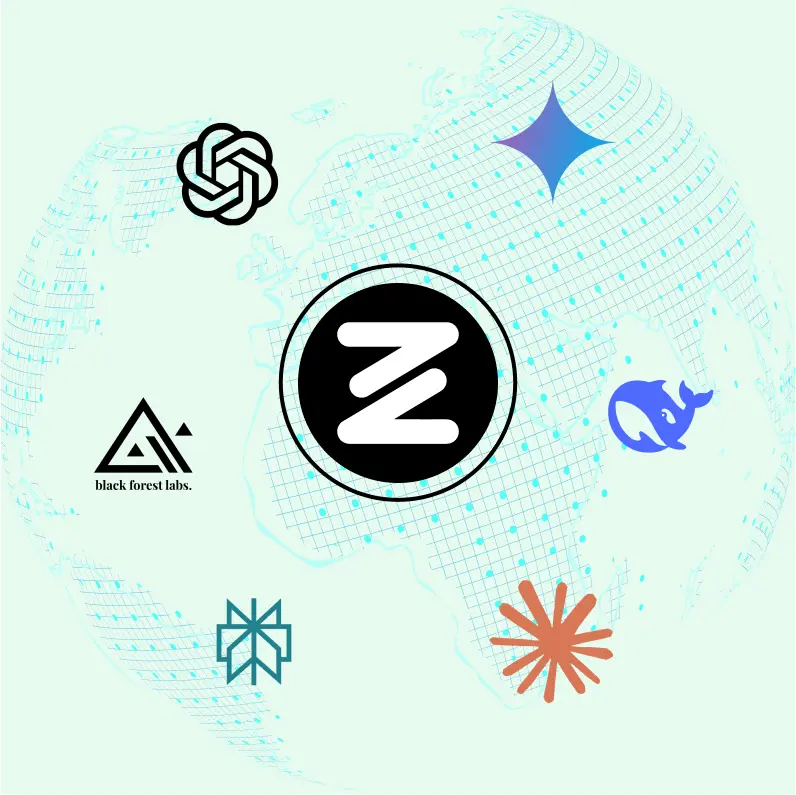
Speed run your documents
Upload documents to your Zemith library and transform them with AI-powered chat, podcast generation, summaries, and more
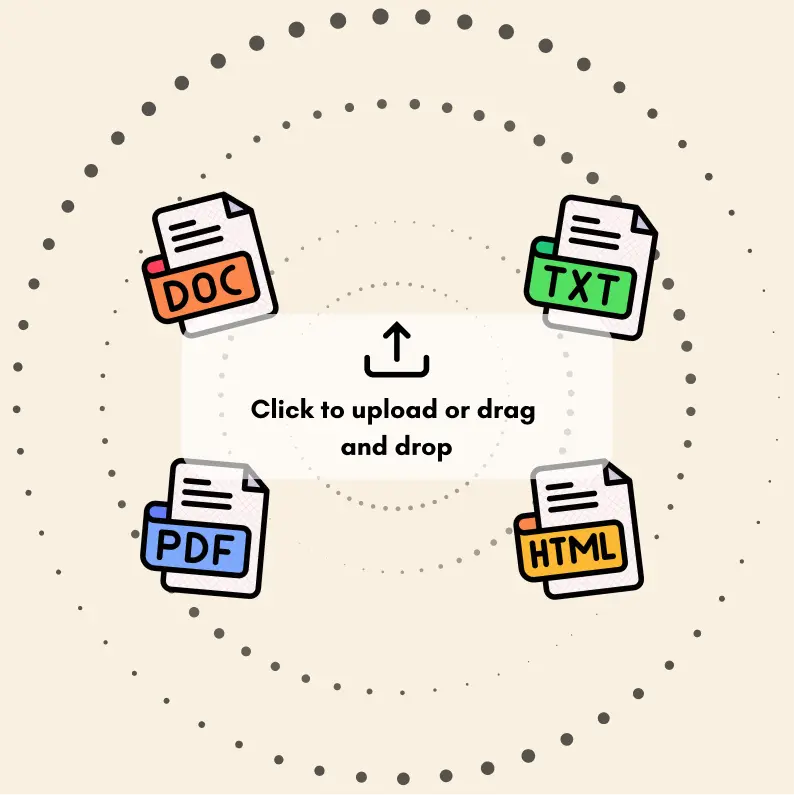
Transform Your Writing Process
Elevate your notes and documents with AI-powered assistance that helps you write faster, better, and with less effort
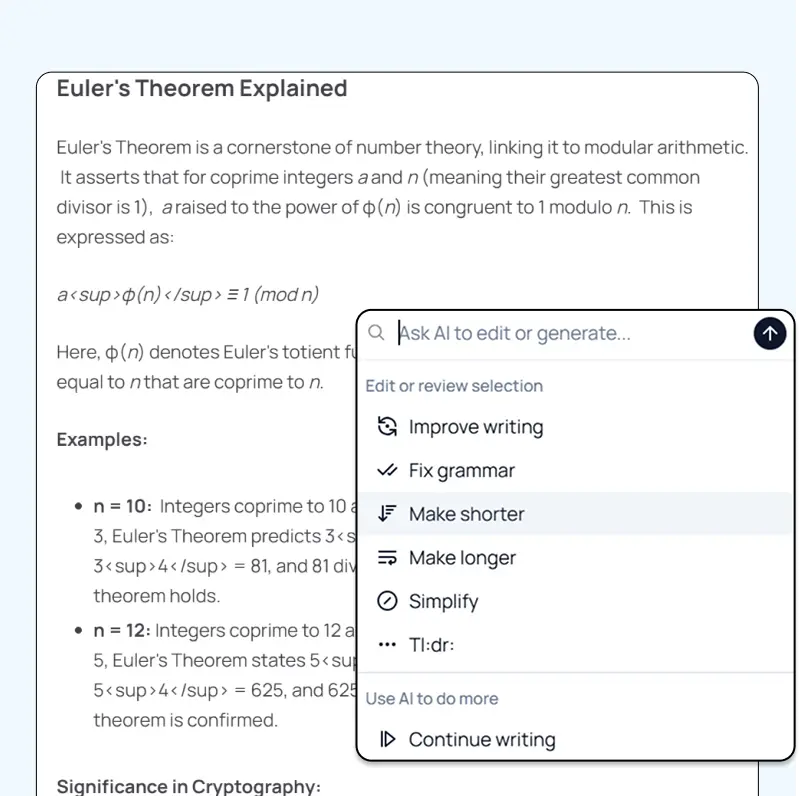
Unleash Your Visual Creativity
Transform ideas into stunning visuals with powerful AI image generation and editing tools that bring your creative vision to life
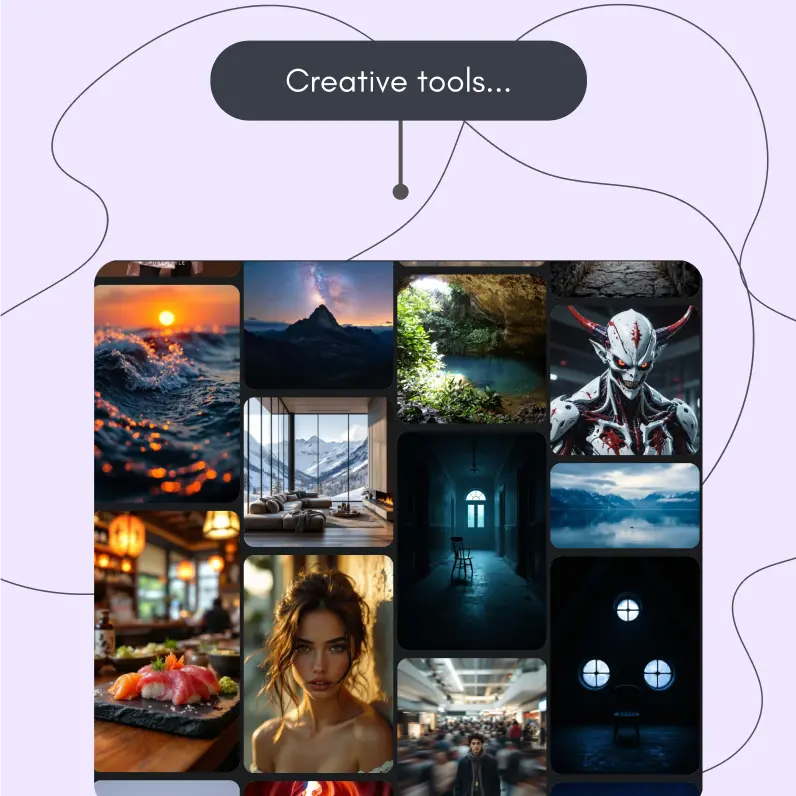
Accelerate Your Development Workflow
Boost productivity with an AI coding companion that helps you write, debug, and optimize code across multiple programming languages
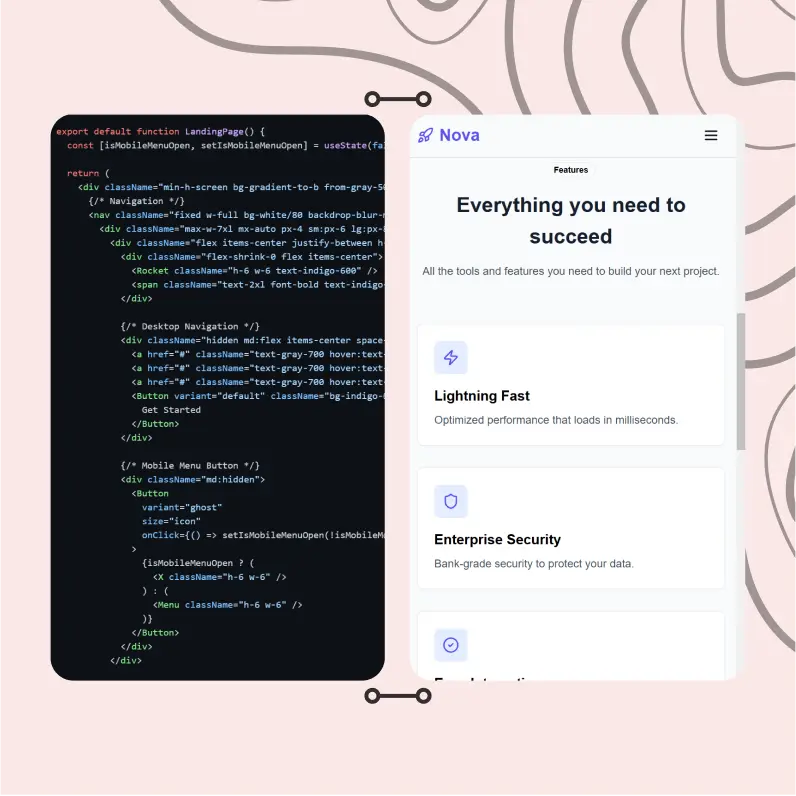
Powerful Tools for Everyday Excellence
Streamline your workflow with our collection of specialized AI tools designed to solve common challenges and boost your productivity
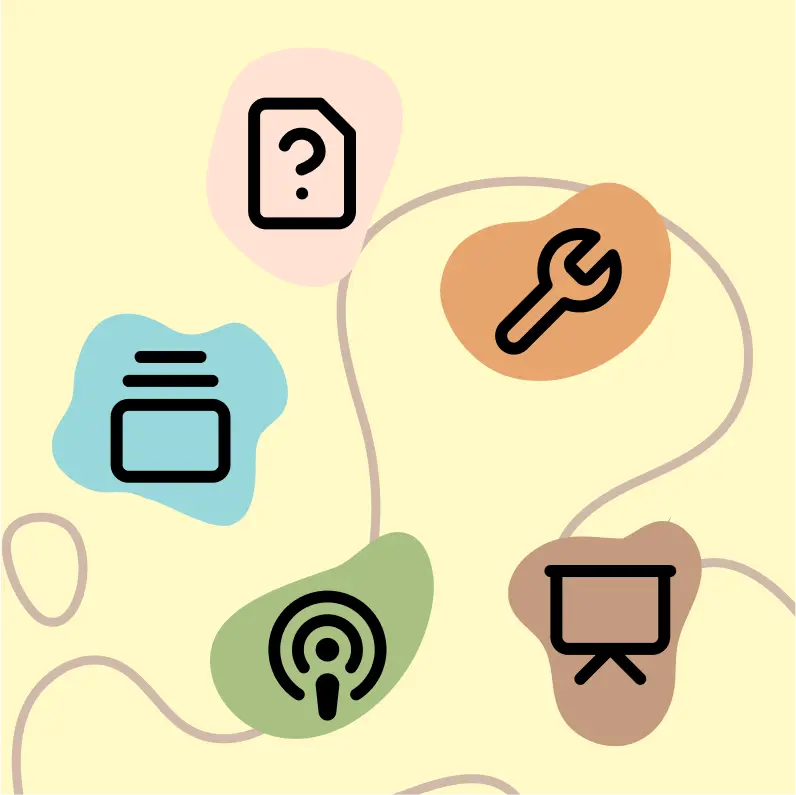
Live Mode for Real Time Conversations
Speak naturally, share your screen and chat in realtime with AI
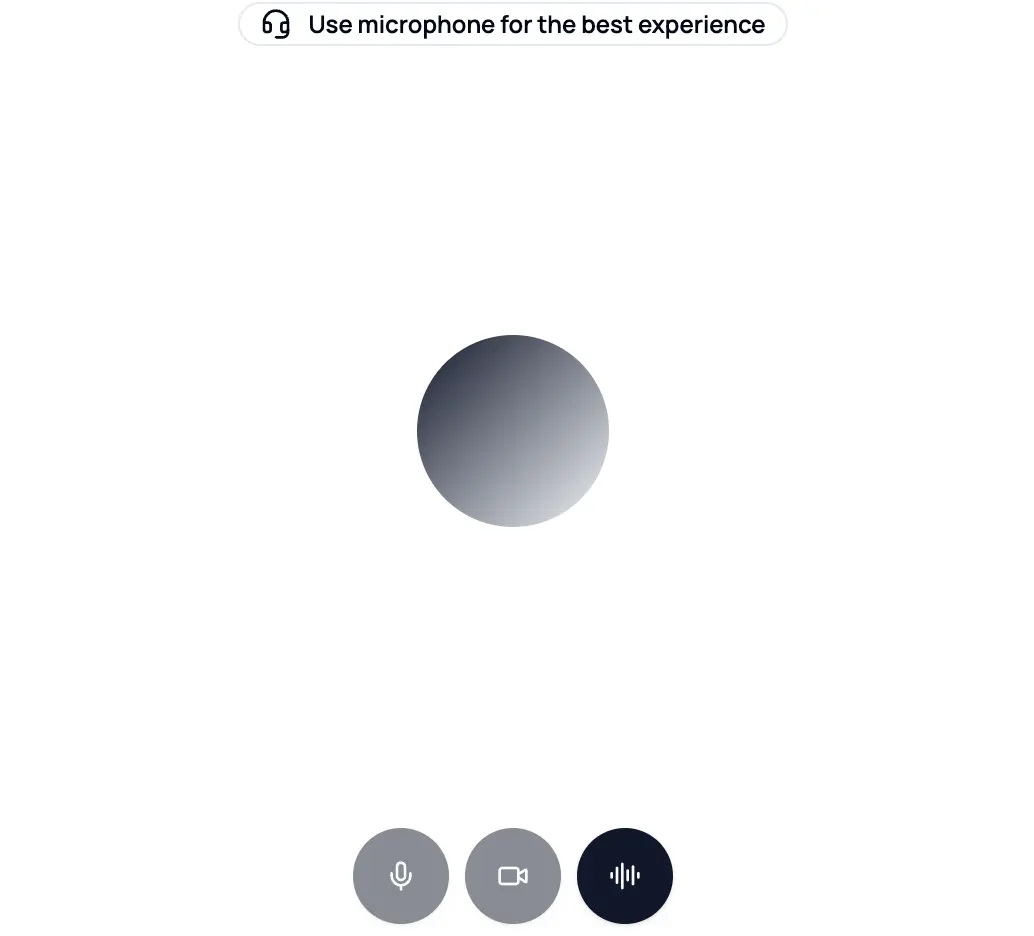
AI in your pocket
Experience the full power of Zemith AI platform wherever you go. Chat with AI, generate content, and boost your productivity from your mobile device.

Deeply Integrated with Top AI Models
Beyond basic AI chat - deeply integrated tools and productivity-focused OS for maximum efficiency
Straightforward, affordable pricing
Save hours of work and research
Affordable plan for power users
Plus
- 10000 Credits Monthly
- Access to plus features
- Access to Plus Models
- Access to tools such as web search, canvas usage, deep research tool
- Access to Creative Features
- Access to Documents Library Features
- Upload up to 50 sources per library folder
- Access to Custom System Prompt
- Access to FocusOS up to 15 tabs
- Unlimited model usage for Gemini 2.5 Flash Lite
- Set Default Model
- Access to Max Mode
- Access to Document to Podcast
- Access to Document to Quiz Generator
- Access to on demand credits
- Access to latest features
Professional
- Everything in Plus, and:
- 21000 Credits Monthly
- Access to Pro Models
- Access to Pro Features
- Access to Video Generation
- Unlimited model usage for GPT 5 Mini
- Access to code interpreter agent
- Access to auto tools
- 10000 Credits Monthly
- Access to plus features
- Access to Plus Models
- Access to tools such as web search, canvas usage, deep research tool
- Access to Creative Features
- Access to Documents Library Features
- Upload up to 50 sources per library folder
- Access to Custom System Prompt
- Access to FocusOS up to 15 tabs
- Unlimited model usage for Gemini 2.5 Flash Lite
- Set Default Model
- Access to Max Mode
- Access to Document to Podcast
- Access to Document to Quiz Generator
- Access to on demand credits
- Access to latest features
- Everything in Plus, and:
- 21000 Credits Monthly
- Access to Pro Models
- Access to Pro Features
- Access to Video Generation
- Unlimited model usage for GPT 5 Mini
- Access to code interpreter agent
- Access to auto tools
What Our Users Say
Great Tool after 2 months usage
simplyzubair
I love the way multiple tools they integrated in one platform. So far it is going in right dorection adding more tools.
Best in Kind!
barefootmedicine
This is another game-change. have used software that kind of offers similar features, but the quality of the data I'm getting back and the sheer speed of the responses is outstanding. I use this app ...
simply awesome
MarianZ
I just tried it - didnt wanna stay with it, because there is so much like that out there. But it convinced me, because: - the discord-channel is very response and fast - the number of models are quite...
A Surprisingly Comprehensive and Engaging Experience
bruno.battocletti
Zemith is not just another app; it's a surprisingly comprehensive platform that feels like a toolbox filled with unexpected delights. From the moment you launch it, you're greeted with a clean and int...
Great for Document Analysis
yerch82
Just works. Simple to use and great for working with documents and make summaries. Money well spend in my opinion.
Great AI site with lots of features and accessible llm's
sumore
what I find most useful in this site is the organization of the features. it's better that all the other site I have so far and even better than chatgpt themselves.
Excellent Tool
AlphaLeaf
Zemith claims to be an all-in-one platform, and after using it, I can confirm that it lives up to that claim. It not only has all the necessary functions, but the UI is also well-designed and very eas...
A well-rounded platform with solid LLMs, extra functionality
SlothMachine
Hey team Zemith! First off: I don't often write these reviews. I should do better, especially with tools that really put their heart and soul into their platform.
This is the best tool I've ever used. Updates are made almost daily, and the feedback process is very fast.
reu0691
This is the best AI tool I've used so far. Updates are made almost daily, and the feedback process is incredibly fast. Just looking at the changelogs, you can see how consistently the developers have ...
